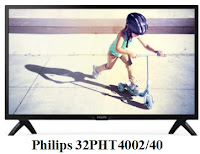Factory / service Mode
Press the following
key sequence on a standard RC transmitter: “1999” directly followed by MENU
Alignments
Software Upgrading and Panel Code
Software Upgrading
Operations and
procedure of software upgrading:
1). Changed the file name to
"MERGE.bin", then stored software in the FAT32 format blank U disk.
2). Insert USB flash disk into the USB
upgrade port, upgrade the software according to the following the operating
instructions:
Select AIR or DTV signal source, press
Menu key to pop up the main menu, then choose.
Select CHANNEL, press right key or OK key to enter.
Select Software Update(USB), press right key or OK key to enter.
Software update menu will pop up when press confirm key, then select “Yes” to confirm:
The process of software updating:
Method 2: Keep pressing
VOL+ and CH+ keys on the machine panel, power on the machine, the standby light
flashes quickly after about 5 seconds, standby light extinguish and turn into
lighting after about a minute, means that the upgrade is completed.
Notice
* When the machine Upgrading (U disk light flash), do not remove U
disk or switch off the power, otherwise it will
destroy the software and lead can not upgrade.
* The machine must be power off when inserted or pulled out U disk,
to avoid U disk or damage the machine.
Connections overview
Panel Code
Press the following key
sequence on a standard RC transmitter: “1999” directly followed by MENU, can
see the panel type information from factory menu, see the Panel PN from the
configuration table
|
CTN_ALT BOM# |
Panel Type |
Panel PN |
|
32PHT4002/40 |
K320WD92-KA240B2 |
7422-320HKK-335B9021- |
Power Supply Unit (SMPS)
All
power supplies are a black box for Service. When defective, a new board must be
ordered and the defective one must be returned, unless the main fuse of the
board is broken. Always replace a defective fuse with one with the correct
specifications! This part is available in the regular market.
Consult the Philips Service web portal for the order codes of the boards.
Important delta’s with the platform are:
* New power architecture for LED backlight
* “Boost”-signal is now a PWM-signal + continuous variable
The control signals are:
* PS-ON
* Lamp “on/off”
*DIM (PWM) (not for PSDL)
No detailed information is available because of design protection issues.
* +12 output (on-mode)
* +12V_audio (audio AMP power)
* Output to the display; in case of
- IPB: High voltage to the LCD panel
- PSL and PSLS (LED-driver outputs)
- PSDL (high frequent) AC-current.
Diversity
The
diversity in power supply units is mainly determined by the diversity in displays.
The following displays can be distinguished:
* CCFL/EEFL backlight: power panel is conventional IPB
* LED backlight:
- side-view LED without scanning: PSL power panel
- side-view LED with scanning: PSLS power panel
- direct-view LED without 2D-dimming: PSL power panel
- direct-view LED with
2D-dimming: PSDL power panel.
PSL stands for Power Supply with integrated LED-drivers.
PSLS stands for a Power Supply with integrated LED-drivers
with added Scanning
functionality (added microcontroller).
PSDL stands for a Power Supply for Direct-view
LED backlight with 2D-dimming.
DC to DC Converters
The
on-board DC/DC converters deliver the following voltages(depending on set
execution):
* +5V-SB, permanent voltage for the Stand-by Power system
* +3V3-STANDBY,voltage for IR/Key board
* +12V, input from the power supply for the panel common(active mode)
* +3V3-EMMC, +V-EMMC-IO, voltage for EMMC when TV on
* +1V5-DDR, +VREF-A2-DQ,, +VREF-A2-CA, voltage for DDR
* TUNER_3V3, supply voltage for tuner
* +5V-SW, input intermediate supply voltage for USB Power
* +12V-AUDIO1 for the AUDIO AMP
* +3.3VA_T2, +1.2V_T2 voltage for Demodulator IC channel decoder.
Power layout SSB
Video and Audio Processing - MSD3463
The
MSD3463 is the main audio and video processor (or System-on-Chip) for this
platform. It has the following features:
1. Worldwide multi-standard analog TV demodulator
2.PAL/SECAM/DVB-T/DVB-T2 /DVB-C demodulators
3.1920*1080@60Hz direct drive
4. Powerful CPU core
5. A transport de-multiplexer
7. A muti-standard video decoder
8. Rich format audio codec
10. HDMI1.4 receiver
11. MHL input
12. 2D converter
14. PWM dimming (LED backlight)
15. Two-link LVDS,
1 OVERVIEW
The MediaTek MSD3463family consists of a DTV front-end demodulator, a backend
decoder and a TV controller and offers high integration for advanced
applications. It integrates a transport de-multiplexer, a high definition video
decoder, an audio decoder, a -link
LVDS transmitter, and a NTSC/PAL/SECAM TV decoder .The MSD3463 enables consumer
electronics manufacturers to build high quality, low cost and feature-rich DTV.
World-Leading Audio/Video Technology: The MSD3463 supports Full MPEG2/4/H.264
video decoder standards, and JPEG. The MSD3463 also supports MediaTek MDDiTM
de-interlace solution which can reach very smooth picture quality for motions.
The special color processing technology provides a natural, deep colors and
true studio quality video. Moreover, theMSD3463 family has built-in high
resolution and high-quality audio codec.
Rich Features for High Value Products: The MSD3463 family enables true
single-chip experience. It integrates high-quality HDMI1.4, high speed VGA ADC,
a-link LVDS, USB2.0 receiver , and ATSC/DVB-T/DVBC/DTMB/ISDB-T demodulators.
All New FHD@60Hz Experience: The MSD346 family provides consumers with FHD 60Hz
direct drive.
WW Common Platform Capability: The MSD3463 family supports ATSC, DVB-T, DVB-C,
and ISDB-T demodulation functions. It
reserves transport stream inputs for external demodulators for other countries
or areas. TV maker can easily port the same UI to worldwide TV models.
First-class adjacent and co-channel rejection capability grants excellent reception.
Professional error- oncealment provides stable, smooth and mosaic-free video
quality.
Power supply schematic diagram






